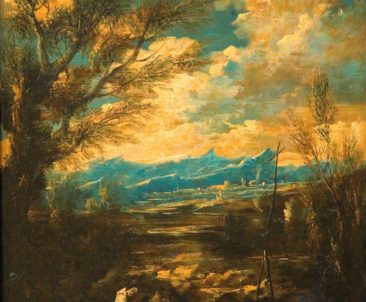

Alessandro Magnasco, like other masters of the Baroque period, painted pictures on biblical or mythological subjects, however, some critics call him “the forerunner of romanticism.” Choosing a traditional plot, the artist places on the background of carefully prescribed ancient landscapes of rogues, robbers, gypsies. Numerous heroes are caricatured, their bodies are often disproportionate, with strange dynamics of movements. But with all the sarcasm and grotesqueness, the master’s works are full of inner drama and expression.
Born Alessandro Magnasco on February 4, 1667 in Genoa in the family of the artist Stefano Magnasco. It was his father who became his first teacher. In Milan, where the young artist left after his father’s death, Francesco Abbiati becomes his mentor.
In 1703, Alessandro Magnasco left Milan and went to Florence to serve the Duke of Tuscany. In 1711, the artist returned to Milan and worked for the aristocratic families of the city. But the master will create the most brilliant and famous canvasses, returning to Genoa in 1735 – “The Scene in the Garden of Albaro”, “Christ in Emmaus”, etc.
Especially it is necessary to highlight the unusual technique of writing Alessandro Magnasco. His painting is different – this is a dynamic brushstrokes, and strokes with a brush. The paint applied in this way, without feathering, adds dynamism to the pictures, enhancing the dramatic effect. His special style, despite the genre variety of canvases, is always guessed. In each of his paintings, Manyasko created his own fantastic, ghostly world, inhabited by monks and vagabonds, strangely gesticulating and as if subordinate to some higher power. Throughout his work, the artist undergoes a long evolution, gradually expelling from his paintings the color, increasingly plunging the scene into chiaroscuro in the spirit of Titian or Tintoretto.
Followers of Magnasco were the Venetian painters Antonio Guardi and Francesco Tiepolo, who imitated his smear. Recognized during his lifetime and forgotten in the XVIII century, he gained popularity only at the beginning of the XX century. Alessandro Magnasco’s canvases are exhibited in the best museums in the world, they are also in Russia – “Bacchanalia”, “Crucifixion”, “Trapeza of Nuns” are kept in the Pushkin Museum. A. S. Pushkin.
The artist died in his hometown of Genoa on March 12, 1749.